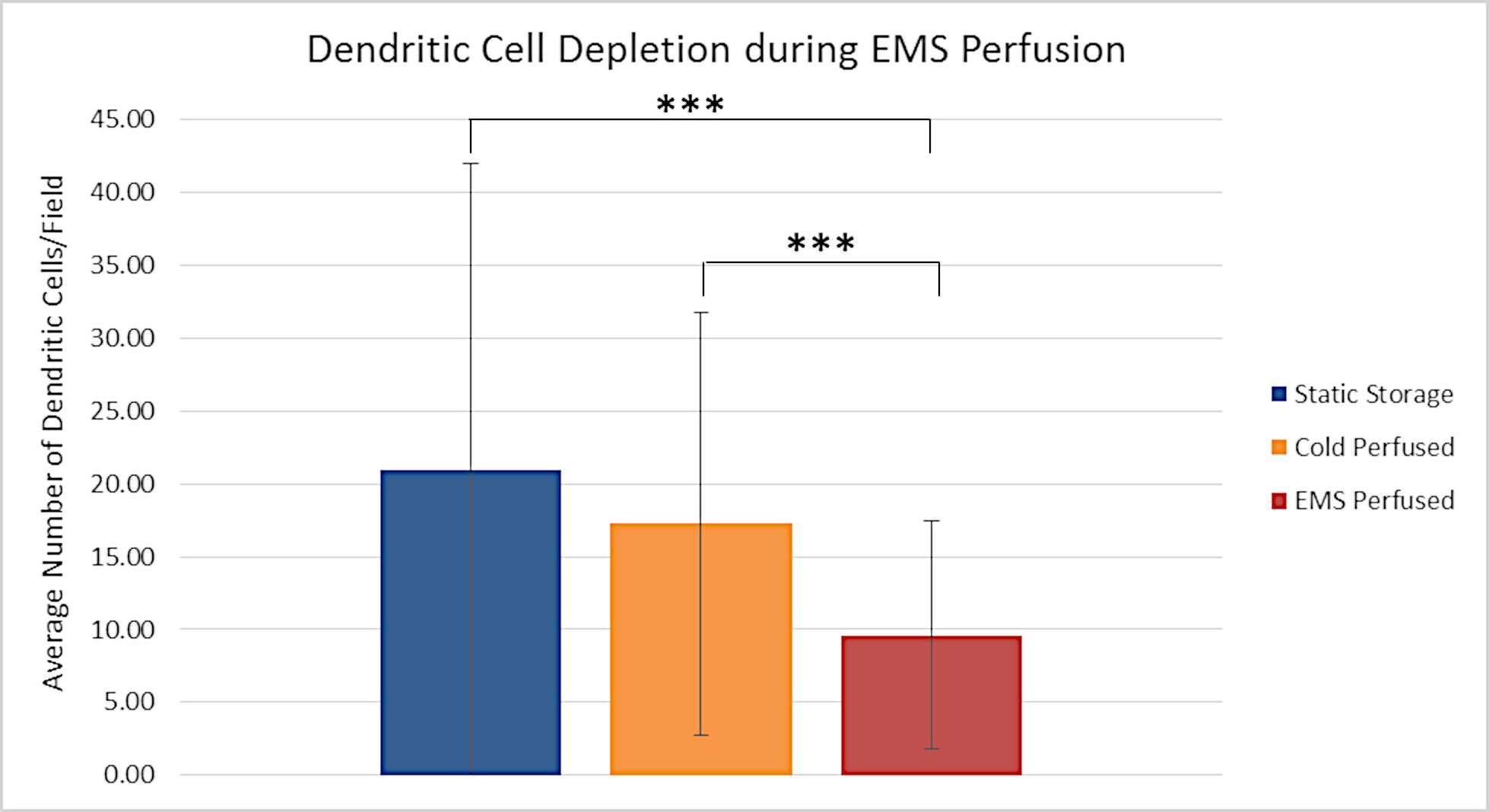Migration of Passenger Leukocytes During Ex Vivo Warm Perfusion
1Research and Development, BREONICS Inc., Watervliet, NY, 2Plastic, Reconstructive & Aesthetic Surgery, St. Antonius Hospital, Utrecht, Netherlands
Meeting: 2020 American Transplant Congress
Abstract number: 461
Keywords: Antigen presentation, Cadaveric organs, Kidney transplantation, Rejection
Session Information
Session Name: Kidney: Acute Cellular Rejection
Session Type: Oral Abstract Session
Date: Saturday, May 30, 2020
Session Time: 3:15pm-4:45pm
 Presentation Time: 4:15pm-4:27pm
Presentation Time: 4:15pm-4:27pm
Location: Virtual
*Purpose: Organ transplantation is a unique immunologic situation in which donor and recipient antigen presenting cells (APCs) are present upon reperfusion. Passenger leukocytes (PL) are donor APCs that become trapped within an allograft at the time of organ retrieval as part of normal immune surveillance. Once the organ is reperfused the PL migrate out of the allograft within hours of re-implantation and travel to the lymphoid organs where they are recognized via direct allorecognition. We evaluated whether migration of intrarenal PL populations in human renal allografts could be mimicked during a 24 hour period of ex vivo warm perfusion.
*Methods: Human kidneys (n=48) from deceased donors that were procured for transplant and discarded based upon standard institutional criteria were studied. Kidneys were grouped into categories consisting of kidneys that were hypothermically machine perfused (HMP) and those that were statically stored for the duration of preservation period. Kidneys were then transitioned to a period of 24 hour warm perfusion. In situ passenger leukocyte populations were determined through histological staining of DC-SIGN of biopsies taken prior to and post warm perfusion. The results were quantified using ImageJ software measuring positive fluorescence per field of sections taken from each human kidney.
*Results: Passenger leukocyte populations in HMP kidneys were found to not migrate out from the renal parenchyma but rather remain trapped within the kidneys as determined through immunofluorescent staining of DC-SIGN. These numbers were similar to those cell populations observed in statically preserved kidneys. However, warm perfused kidneys provided a statistically significant reduction in passenger leukocyte population when compared to HMP and static stored allografts respectively (p<0.001). (Figure 1)
*Conclusions: The results of the study demonstrate the potential to remove passenger leukocytes trapped within the kidney through a period of acellular ex vivo warm perfusion. While it remains unlikely that simply removing the donor PL within kidney allografts will provide any long term solution it may be sufficient to minimize the initial opportunity for direct antigen presentation. Future studies will need to be conducted to further develop therapies to prevent the development of late or chronic rejection. The ability to remove or treat passenger leukocytes in an organ specific manner could lead to major advancements in the field of transplantation.
To cite this abstract in AMA style:
Brasile L, Stubenitsky B. Migration of Passenger Leukocytes During Ex Vivo Warm Perfusion [abstract]. Am J Transplant. 2020; 20 (suppl 3). https://atcmeetingabstracts.com/abstract/migration-of-passenger-leukocytes-during-ex-vivo-warm-perfusion/. Accessed December 21, 2025.« Back to 2020 American Transplant Congress

